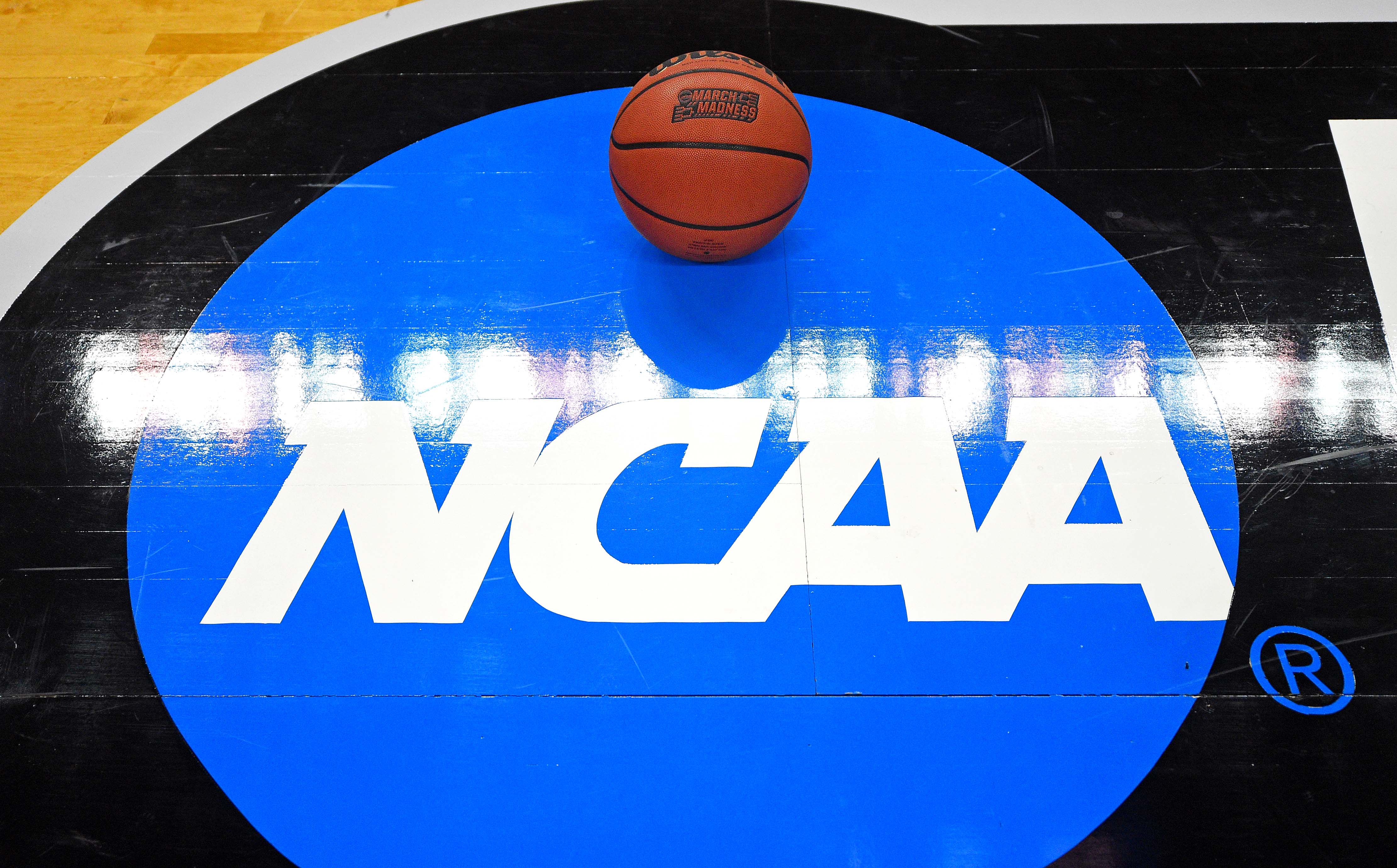
What we learned (or didn’t learn) from last year
The 2019-2020 men’s basketball season was fun…while it lasted. Right out of the gate we witnessed historically huge upsets like Stephen F Austin over Duke and Evansville over Kentucky (on Duke and Kentucky’s home courts!) and for the first time ever no D-1 school remained undefeated through the middle of December. As the calendar shifted from non-conference to conference schedules we saw a number of lower-profile programs make the jump to contending status (BYU, Providence, Seton Hall) while some of the usual suspects (North Carolina, Virginia, and Arizona) dropped out of the top 25 for most of the season – and in UNC’s case flat-out sucked.
The stage was set for one helluva tournament. It was entirely conceivable for the Final Four to feature the likes of Dayton, Gonzaga, San Diego State, and Iowa!
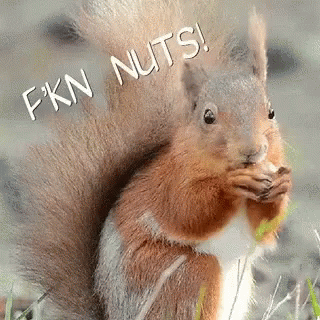
Some of these trends reflect a shift in power atop the college basketball hierarchy. Traditional Blue Bloods such as Duke, Kentucky, and North Carolina have taken a bit of a step back in recent years while New Bloods like Virginia, Villanova, Texas Tech, and Gonzaga have solidified themselves as legit contenders year over year.
But when it comes to telling the story of last year’s season, the final chapter reads blank because the NCAA tournament never happened. We’re left to sift through a lot of what-ifs while finding amusement at the expense of some really depressed mascots.

This ambiguity poses real challenges when it comes to evaluating what actually happened last season and attempting to put any sort of bow on it. After all, the NCAA tournament is the ultimate litmus test and deciding force that normally would have answered questions like Can Iowa win with no defense?, Can anyone match up with Kansas?, or Will Obi Topin continue to be a human highlight machine and dunk his way to Dayton’s first title? But the lack of a tournament also poses major challenges for projecting this season. There’s less certainty about who’s actually any good, which powerhouses are over-rated, and which mid-majors are poised to bust America’s brackets.
I guess what I’m saying is that I’ve never felt I had a more competitive advantage over the betting field than I do heading into this season. After all, my hundreds of hours basketball viewing – stretching from last November through early March – couldn’t all have been for nothing, right???

What to expect (or not expect) from this season
Who the hell really knows how the 2020-2021 season will play out. The season is scheduled to start on November 25th, but we’ve already had close to 50 programs suspend games due to Covid positives or exposure concerns. Safe to assume this will be a factor each and every week for the next five months – we might see this impact 20 to 80 programs at a time. The games that do actually happen will inevitably have a different feel to them because there will be no fans in attendance. That’s a big deal in college basketball when you consider how much of a home court advantage most schools typically have. So you’ll probably have close games, or more blow-outs, depending on the situation. But on the bright side this season will likely have the highest TV ratings ever.
One thing we know for sure (kinda) is that the 2021 NCAA Tournament will be played exclusively in and around Indianapolis, as opposed to all across the country. While it would be a stretch to expect fans in attendance by then, I can see this reformatting having a positive impact on watchability. To fit all of the first-round games in you’ll probably have earlier tip times and then staggered starts every hour or so, meaning that there will be long spans of time where there are actually more than 4 games on at once.
If I had to guess, I’d say that there’s a good chance that the regular season gets extended through March and the tourney starts mid April in order for more teams get in 20+ games. This also makes considerable sense when you consider the timeline of a vaccine.
Picking up where last season left off, one story line to watch is the fact that a lot of the usual suspects aren’t favored to win their leagues. Part of this has to do with the fact that many of the top incoming freshmen aren’t all at the big name schools (see Cade Cunningham at Oklahoma State). Upperclassmen dominated the sport last year, which is a trend that I expect to continue this season as there’s a long list of teams with players who chose to forego the NBA draft for another shot at a Final Four run (see Remy Martin at Arizona State, Marcus Zegarowski at Creighton, Ayo Desunmu at Illinois, Jared Butler at Baylor, Luka Garza at Iowa).
It’s setting up to be the Year of the Big’s as the top three conferences in college basketball appear to be the Big Ten, Big 12, and Big East. 7 of the pre-season AP Top 25 reside in the Big Ten alone, 5 teams in the Big 12 are legit Final Four contenders, and almost no team in the Big East should be counted out in a conference chock full of tough, experienced squads.
Buckle up, getchya popcorn ready, because either way we are heading in to the craziest college basketball season in the history of the sport.

Here are my pre-season picks for Final Four front runners, teams on the rise and fall, wildcards, and Cinderellas.
The Front Runners
Gonzaga

A would-have-been #1 seed in last season’s tourney returns almost all of its core. Mark Few’s Bulldogs have been the epitome of consistency over the last two decades – more so than Duke, Kentucky, Kansas, Nova, etc. – having never missed an NCAA under Few (a streak with no end in sight). Since 2004 they’ve earned a 4 seed or better nine times. The crazy part? This might be their best team to date.
The Zags’ offense is a thing of beauty. They move with and without the ball, everyone gets touches, everyone can shoot, and they play fast…REALLY fast…without turning the ball over. Featuring returners Cory Kispert (14 ppg at 44% from three), Joel Agayi (11 points, 7 rebounds, 3 assists, and 1.3 steals per game) and Drew Timme (a rising star who efficiently posted 10 points, 1 block, and 6 rebounds on just 20 minutes a game as a freshman), Gonzaga has the right balance of star-power and depth to hang with anyone. And I haven’t even mentioned 5-star recuit Jalen Suggs, who is poised to be Gonzaga’s most talented freshmen in school history.
They are built to thrive in today’s game. Suggs and Ajayi are perfect compliments as the two feature guards, Kispert is a lights out/shut down 3-and-D type, forward Anton Watson stretches the floor, and Drew Timme is their dominant anchor at 5 who runs the floor and shoots it as well as any center in the country. When you evaluate this team, however, you can’t ignore the huge losses of Filip Petrusev and Killian Tillie. Both of these bigs were elite passers and helped make the Zags such a dominant inside-out team. That being said, this team has plenty of ammo to come back just as good if not better than last year. With a loaded non-conference schedule they will have plenty of chances to prove their worth. Their first four opponents are Kansas, Auburn, Baylor, and Iowa. If they sweep there will be little to no case against them as the #1 team in the nation.
Baylor

Baylor won 23 games in a row last season. Twenty three! In the Big 12! They return 7 of their top 9 scorers, including their top three – guards Jared Butler, MaCio Teague, and Davion Mitchell. Baylor’s three-headed back court is a menace for offenses and defenses alike. They put an enormous amount of pressure on you from both sides of the ball and can all step up to be the featured scorer in clutch situations.
The Bears are the top ranked team according to Ken Pom, ranking 3rd in adjusted offensive efficiency and 8th in adjusted defense. But if you ask most experts they’ll tell you it will be hard to name four teams with a stingier defense (okay I’ll try – Virginia, Texas Tech, West Virginia…Kansas? idk, that might be pushing it). My point here is that Baylor’s style of play is very conducive to both regular season and post season accolades. They will show up every night, especially when the lights are brightest, because defense and veteran guard play tend to do that.
Losing Freddie Gillespie will hurt them on defense, but this is a minor setback when you consider the defensive prowess of their returners as well as the likely upgrade in their offensive numbers. Butler and Teague are NBA talents that decided to suspend their futures for one more go at it in college, and they have a legit shot at both averaging close to 20 points per game this season. Jared Butler is the kind of player whose finger prints touch just about every aspect of the game. Here’s a few reasons why he could emerge as a serious National Player of the Year candidate.
The Bears face some serious adversity right out of the gate this season with head coach Scott Drew announcing on Sunday that he had contracted Covid. Longtime assistant Jerome Tang will serve as the interim coach when they face #18 Arizona State on Wednesday. If they manage to win that one, all eyes will turn to Indianapolis when they face off with Gonzaga on Saturday, December 5th for bragging rights to #1.
Villanova

Nova has a legit shot at winning 3 of the last 5 NCAA Tournaments. They are once again the clear-cut beasts of the Big East and are loaded with experience, balanced scoring, and team-first players. This team has 7+ really good college players but they admittedly don’t have the same star power of future pros as their past title teams.
The Wildcats’ chances at a Championship hinge on how much of a leap sophomores Justin Moore and Jeremiah Robinson-Earl take this year, along with how clutch senior leaders Collin Gillespie and Jermaine Samuels can be. Collin Gillespie is the name to know on this squad – he scores and assists at will and has the experience and composure to lead Nova on a deep run in March.
Aside from Gillespie, this is more of a talent-by-committee than a top-talent-squad. But it’s hard to name a deeper, more balanced starting five than these guys, all of whom have tremendous upside when it comes to improving as the season progresses. Has Jay Wright elevated his program to Blue Blood status? Damn straight. Don’t sleep on Nova.
Virginia

Leading into the 2019 NCAA Tournament, I wrote that Virginia was the next Villanova in the college basketball hierarchy. A month later the Cavaliers went ahead and won their first title in school history, and won me a lot of money for the second year in a row. God bless you, Kyle Guy & co.
Last season proved that they clearly missed the departures of “Kyle Guy & co.”, as the Cavs hobbled to a 12-6 start before winning 11 of the last 12. College Basketball had about three months to capitalize off of a Virginia rebuild, and now that window is sealed firmly shut. Sure, when you finish 234th in offensive efficiency as the defending Champs it’s not a great look. But when they peel back the layers of last year’s season, future opponents see a lot more to be afraid of than to lick your lips about. Let’s start with the fact that the Wahoos were, once again, the best defensive team in the country (and are poised to be even more dominant on that side of the ball this season according to KenPom). Add in the fact that Virginia beat three top-10 opponents in the final stretch of last year, holding them to an average of 53 points, and you see what I’m saying here – in a down year they were still really, really good.
Another reason for optimism this year concerns their newest transfer addition Sam Hauser. Hauser was a lethal shooter in his days at Marquette alongside Markus Howard and his brother Joey, and is poised to take a step forward with the benefit of floor general Kihei Clark. Clark’s last-second pass to save Virginia’s season two years ago remains maybe the most clutch thing I’ve ever seen other than this.
Senior forward Jay Huff has also caught people’s attention looking stronger than ever, thanks in part to his wood-chopping offseason routine. Huff learned a lot from previous defensive studs such as DeAndre Hunter, Mamadi Diakite, Jack Salt, and Isaiah Wilkins and will be a force to be reckoned with down low.
Virginia may not be the sexiest team to watch (unless you’re admiring their coach), but they play a throw-back style that slows down the tempo and makes it damn near impossible to score in bunches against them. What do you get when you add an explosive offensive player like Sam Hauser to an already elite defense? A lot of wins in November, December, January, February, March…and maybe even April.
Illinois

This is the best Illinois team since the 2005 Deron Williams/Dee Brown Final Four run. Akin to their team 15 years ago, the 2020 squad features two bright stars – Ayo Dosnmu and Kofi Cockburn – who are destined for success in the NBA. In fact, both of these guys appeared to be out the door a few months ago, only to withdrawn from the NBA draft in pursuit of one last run at Champaign. Dosnmu and Cockburn are the best inside-out combo in the game right now. Here are some reasons why. Dosnmu in particular will be a name to watch for, as he is widely regarded as the best two-way player in the country. Clutch on offense, aggressive on defense, and a smooth game anywhere on the court. He is exactly what everyone NBA GM dreams of in a wing scorer, and he’s gonna make a lot of money in that league for a while.
Brad Underwood is in my mind a very under-rated coach. He made Stephen F Austin a relevant Cinderella and has now helped Illinois take a huge leap forward towards the top of the sport. The way he’s accomplished this last part involved some pretty stark shifts in basketball philosophy and style. His teams at Stephen F Austin, Oklahoma State, and even his first season at Illinois played fast and frantic, but last year he decided to slow the tempo down considerably and it jolted his team firmly into the Top 25. Expect this team to relevant deep into March Madness this season.
Iowa
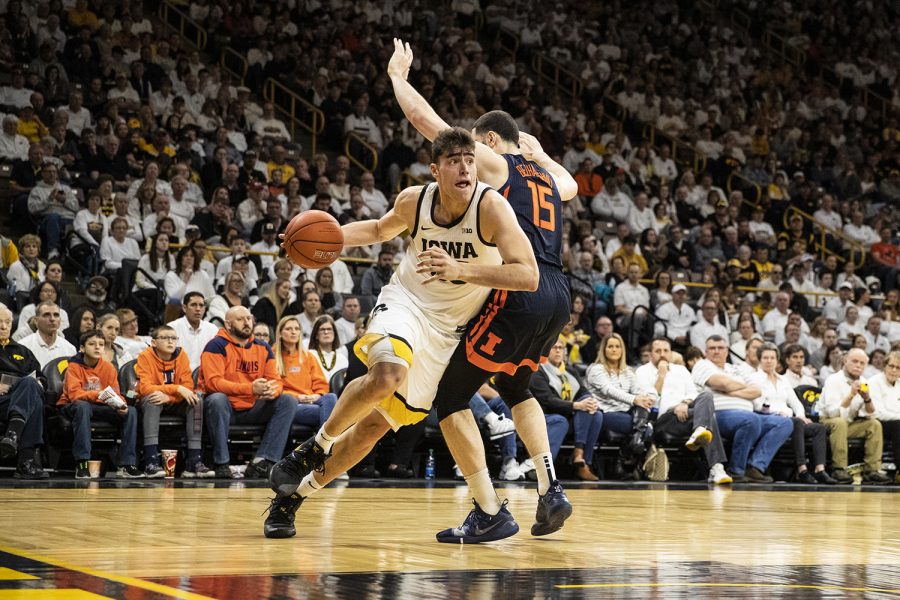
The Hawkeyes are my pick for the Most Watchable team in college basketball this season. They shoot the lights out. And they give up a lot of points on defense. But they are a rare example of a team that is so exceptional at offense that their defensive deficiencies typically pale in comparison.
If you don’t know about Luka Garza, you will soon. He is the most talented scorer in the nation, was damn-near unstoppable at times last year against elite defenses and could very likely take another leap forward towards complete, sport-dominant stardom during his 2020-2021 run. Not only did Garza recently turn vegan this off-season, word on the street is that he’s developed a rather lethal hook shot. C’mon, feels a little unfair at this point dude.
What makes Iowa a serious contender isn’t just Garza’s utter domination of anyone in his face. More so, it’s that he has a ton of talent surrounding him. How do you stop a team with five great shooters? Answer: you don’t, you just hope you have the greatest shooting performance of your life to make up for it. Five players who started at least 20 games last year are all back. Aside from Garza, Conor McCaffery, Joe Wieskamp, and Jordan Bohannon will all put up 15+ points most games. So yeah, good luck holding these guys below 80.
Check Luka Garza pwning everyone in these highlights.
Wisconsin
/cdn.vox-cdn.com/uploads/chorus_image/image/65699172/875132316.jpg.0.jpg)
Wisconsin has perhaps the highest floor but the lowest ceiling among the group of elite teams. They are deep, really deep, and bring back a lot of experienced upperclassmen. They were the best 3-point shooting team in the Big Ten last season and effectively play two centers (Nate Reuvers and Micah Potter) to create a serious mismatch for opponents. Guard Brad Davison is widely regarded as the most hated player in college basketball these days, but I love him. He’s a nightmare to play against on the defensive end, and drew as many as 5 charges in a game against against NC State last year.
These days, season-over-season momentum might not be what it usually is. But a 9-1 record in their final ten games while playing in the best conference in college basketball last year is no joke. The Badgers are built to be a consistent force this season. They won’t beat themselves very often, and have the kind of team chemistry that bodes well for March.
Stock Rising

West Virginia
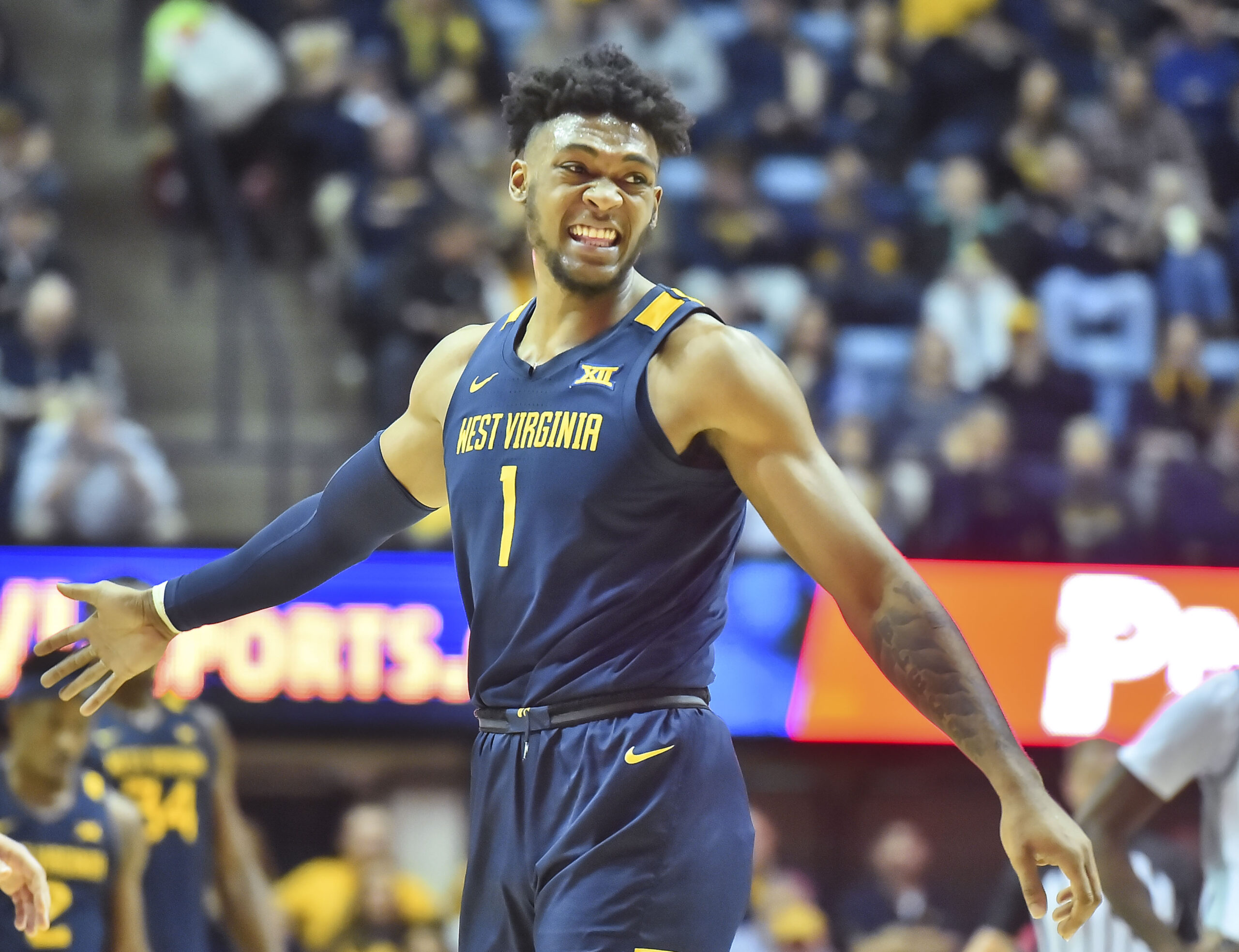
The Mountaineers will surprise some people this season. Still relatively young in comparison to the median age of college squads, this team is loaded with future NBA talent and budding before our very eyes. Good luck scoring on these guys. Sophomores Derek Culver and Oscar Tshibwe are a towering front court duo whose stature and athleticism take away any easy looks in the paint. Guards Sean McNeil, Miles “Deuce” McBride, and Jordan McCabe can put a lot of pressure on the perimeter and have shown flashes of play-making potential on offense. For their offense to truly click, though, they’ll have to see a big year out of Deuce McBride. He’s their go-to perimeter threat and lights it up from three when he’s hot.
I’m not counting out Bob Huggins this season. He won quarantine this year, and will win a lot of basketball games too. My sleeper pick for coach of the year.
Texas
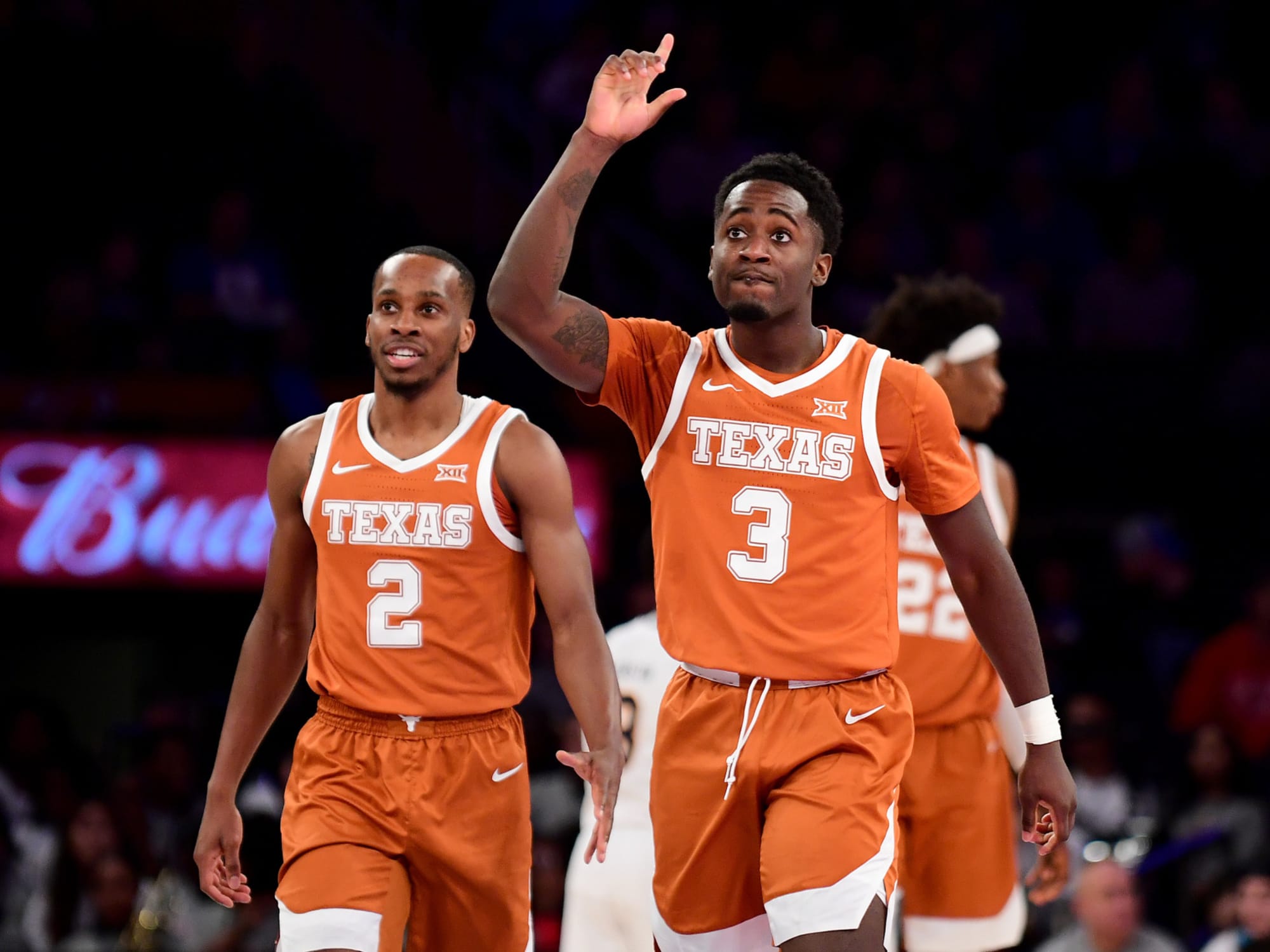
This feels like it could finally be Shaka Smart’s year. There’s going to be a ton of talent in Austin this season as the Longhorns return every single scholarship player. They were 4th in adjusted defensive efficiency last year and had five players averaging at least ten points per game. PG Matt Coleman, F Jericho Sims, and freshman stud forward Greg Brown will be the x-factors for Texas this season, but they also have plenty of depth and experience (10 upperclassmen) to boost their profile.
Texas Tech

In a few years’ time, Chris Beard has built a juggernaut program in Lubbock. They took the nation by storm with a dominant Elite Eight run three seasons ago, and then bested that with a Finals appearance (narrow overtime loss) in 2019. Beard has lost some key players like Jarrett Culver, Zhaire Smith, Matt Mooney, and Davide Moretti along the way, but he’s managed to re-load with feature guard Kyler Edwards along with star transfers Mac McClung and Marcus Santos-Silva. They look to be a pretty complete roster when you fit all of the pieces together.
The Red Raiders’ calling card is their suffocating defense. They force you out of your comfort zone, trapping you helplessly on the baseline or smothered in double-teams. They switch on defense constantly and have a knack for forcing turnovers without returning the favor on offense.
UCLA

UCLA; so hot right now. Mic Cronin has really built something special going into his second year in Westwood. But it didnt’ start so pretty. Last year his Bruins got off to an ugly 9-12 start featuring a shocking upset by the hands of Cal State Fullerton, and most people were poised to right them off to the point where Shaq’s son Shareef O’Neal elected to transfer mid-season to LSU.
But then everything shifted when the calendar turned to 2020. Cronin’s young but impressionable squad started practicing what he preached on the defensive side of the ball and a few players stepped up big on offense. UCLA finished the season winners of 11 of their last 14 and emerged as a trendy Final Four pick before you-know-what put their season on ice.
Star guard Chris Smith flirted with the NBA draft but ultimately chose to stay, which gives a huge boost to a top 20 KenPom offense that also adds transfer Johnny Juzang from Kentucky and freshman phenom Jaylen Clark. This is a group you can trust to be strong on both ends of the floor. After a decade of underachieving they have re-emerged as one of the best in the West, and don’t appear to be abandoning this claim anytime soon.
Arizona State

Two words – Remy Martin. He’s had a legendary career already for the Sun Devils and is positioned to go down as one of the most prolific four-year players in recent memory. If ASU stays hot into March, Martin will be the darling of this season’s tournament – he’s really must see TV with his electric shot-making and speed. The duo of Martin and back court accomplice Alonzo Verge Jr. should average 40 points a game this year, and there’s plenty more scoring to go around beyond these two guys with forward Romello White, Ohio State transfer Luther Muhammad, and 10th-ranked freshman recruit Josh Christopher.
This is a top 10 offense with a good enough defense to win the Pac 12 and secure their best tournament seed in school history. Bobby Hurley also adds to their watchability with his crazed passion. Gotta respect the guy for unapologetically wearing his emotions on his sleeve.
Creighton

This will be the best team Creighton has fielded since the Doug McDermott days. They are a wing oriented team that scores at will. Mitch Ballock (44% from three, 5 rebounds per game) and Marcus Zegarowski (16 PPG, 5 assists per game) are ready to take their games to the next level and fuel an offense that might score 90 more often than they score 70. But their Achilles heel will surely be their defense, which ranked 97th in adjusted efficiency last season and isn’t poised to be a whole lot better this year.
Zegarowski (Michael Carter-Williams’ half brother) will be another name to watch as the calendar turns to March. He has a thirst for the limelight and is the complete package on offense. He’s a triple-threat with his shooting, passing, and dribbling but it’s really his deep scoring repertoire that allows him to take over any game he needs to.
Houston

Houston is a program on the rise. Kelvin Sampson’s Cougars have been trending in the right direction for three years in a row – in 2018 they lost a buzzer-beater to the eventual runner-ups Michigan in the second round, in 2019 they lost a nail biter to Kentucky in the Sweet Sixteen, and they were ranked in both the AP and Coaches Polls for the final 9 weeks of last season with their best basketball likely ahead of them.
Former Kansas 5-star Quintin Grimes, senior guard DeJon Jarreau, and sophomore stud Caleb Mills are the nucleus of a deep and talented squad that is favored to win the American Athletic Conference outright. These guys really get out and guard you and are a handful on the offensive and defensive boards. Their balanced scoring and ball distribution makes them a hard team to gameplan against – they’ll be a tough out in March.
Rutgers
/cdn.vox-cdn.com/uploads/chorus_image/image/66917609/1210347594.jpg.0.jpg)
Rutgers basketball is back, baby! Or I guess more accurately it has finally arrived. This is easily the most talented Scarlet Knights squad in school history. Point guard Geo Baker and small forward Ron Harper Jr. run the show, but there’s plenty of talent and experience to go around for a team that has 9 upperclassmen on its roster. It will be tough to predict how the lack of fans in arenas will impact this team moving forward – last year they were a staggering 18-1 at home and 2-10 on the road.
Tennessee

Try this on for size – the best player in the SEC is a lanky white guy on the Tennessee Volunteers. His name? John Fulkerson, 6’9” forward who averaged 14 points and 6 rebounds last year and is poised to take a huge leap heading into 2021 after he boasted close to 20 PPG in the final 10 games. Fulkerson may not immediately awe you with his stature but he sure as hell breaks you down with his unwavering hustle, crafty footwork, and floor spacing. He’s the true leader of his team, a spark plug because of both his attitude and his talent.
Fulkerson is surrounded by a lot of talent this year. Yves Pons compliments him with elite wing scoring and freshmen Keon Johnson and Jaden Springer look to be surefire one-and-dones. Another thing that makes Tennessee a contender this year is their versatility – they have the roster pieces to adjust to their opponent, go small or playing a true 5 when necessary.
As I’m writing this, I just learned that head coach Rick Barnes (66 years old) just tested positive for Covid-19. The Vols are pausing all activities until further testing results are provided.
Stock Falling

Kansas

Kansas would have been the odds-on favorites to win the National Championship going into the 2020 tournament. But a lot of that had to do with departing stars Devon Dotson and Udoku Azubuike. These guys really made their offense tick last year as a dominant inside-outside punch and it’s unclear how the Jayhawks plan to overcome this deficit heading into this season. Their returning players aren’t great shooters, and as a whole Kansas was a lowly 249th in made threes per game last season. But they do have the Marcus Garrett, whom coach Bill Self has called the best defensive player he’s ever coached. Self isn’t the only one screaming this – Garrett took home the hardware as the Naismith Defensive Player of the Year and has a good chance at repeating this year. Without a reliable offense to compete in the grind that is this year’s Big 12, this year’s Kansas squad could end the reason with its worst record in a decade (which is to say, they will be pretty good, but not great). They start the season ranked 6th in the nation, but don’t be surprised if they slip to the low teens after the dust has settled.
Kentucky

Starting to see a trend here? Like I said earlier, this is a down year for the Blue Bloods so Kentucky is no exception. Calipari is well-accustomed to starting from scratch year over year given his track record of one-and-dones, but this year feels a little different because he doesn’t appear to have the same talent coming in to replace what’s left. The Wildcats’ projected starters include 3 freshmen, 1 transfer (Oliver Sarr from Wake Forest), and a returning player who averaged 4 points on 12 minutes last year. They enter this season as less of a threat than usual but if anyone can prove us wrong it’s certainly Coach Cal.
Duke
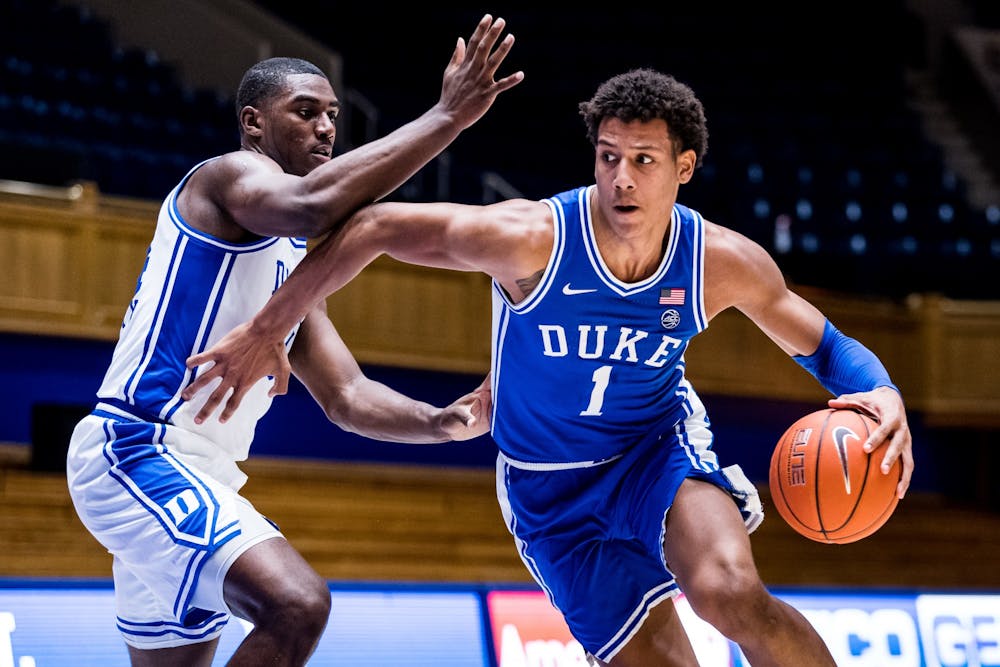
Duke had somewhat of a down year last season – which is relative given that they still finished the year in the top ten. But this year doesn’t feel like a step in the right direction. They were horrible on defense and there’s little reason to expect they’ll be much better, especially with the key departure of Tre Jones. The Blue Devils bring in a decent freshmen class featuring a plethora of 5-star recruits Jalen Johson, Jaemyn Brakefield, Jeremy Roach, DJ Steward, and Mark Williams. I’m excited to see Johnson’s explosiveness on the court but other than that this team does not dazzle at first glance.
Michigan State

Michigan State is yet another name we aren’t accustomed to seeing in this category. Akin to Kansas, they lost two veteran stars in Cassius Winston and Xavier Tillman from last year and it’s unclear how this production can be replaced. Joshua Langford has returns from a year-two injury so we’ll have to wait and see how he looks. There’s also no clarity as far as who will take the lead as the team’s feature point guard, as it’s a toss-up between sophomore Rocket Watts and junior Foster Loyer. As if the Spartans needed to make matters any harder for themselves, their head coach Tom Izzo recently tested positive for Covid-19 and will be away from the team to start the season.
Louisville
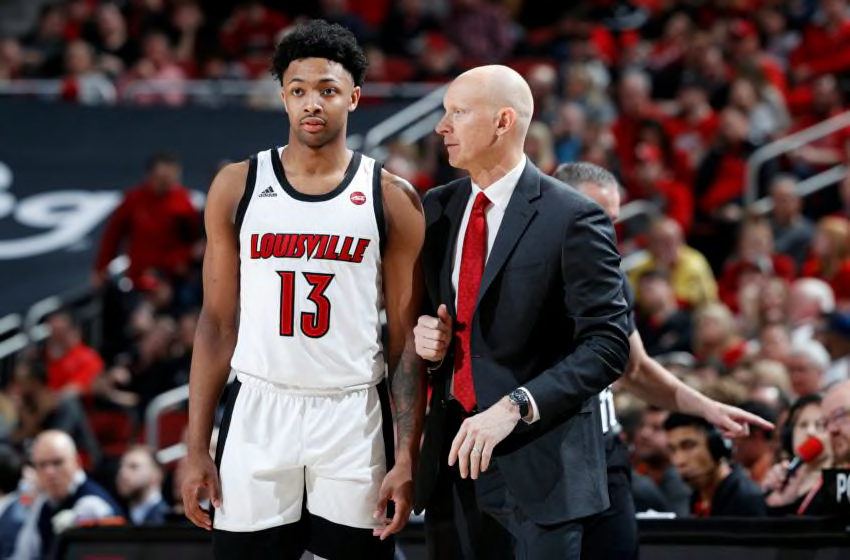
Louisville held the #1 ranking in the land last December but the Cardinals tapered off as the season progressed. To be honest, they were never really good enough to earn that status in the first place. They were inconsistent on both ends of the floor and had an unfortunate tendency to wilt against elite opponents. Louisville enters this season ranked outside the top 25 and will struggle to replace the production from recent NBA draftee Jordan Nwora. Don’t be surprised if they aren’t dancing come March.
Wichita State

Wichita State’s decline has been a few years in the making, but it recently hit rock bottom with the firing of head coach Greg Marshall. Their most talented player, Marcos Santos-Silva, transferred to Texas Tech and they enter this year ranked 97th in KenPom.
Wild Cards
Providence

It was a tale of two seasons for the Friars last year. They started their 2019-2020 campaign looking rather mediocre posting a 6-6 record through the first month and a half. But then they got hot and ripped off 6 straight to finish the second. No one wanted to play these guys in March, and although they had a few key departures they still have their star player David Duke leading the way. Duke averaged 12 points, 1.5 steals and 3 assists while shooting 43% from three. With increased minutes you can expect all of these numbers to tick upwards considerably this season.
Florida

The Gators grossly underachieved last year after being a pre-season top 10. My guess is that their young core of 5-star recruits will rebound considerably in year two. Expect breakout seasons from sophomores Scottie Lewis and Tre Mann, and an All-American caliber year from junior forward Keyontae Johnson.
Ohio State

For a few weeks last December, Ohio State looked to be the best team in the country. That wasn’t just my humble opinion – John Calipari thought so too after his Wildcats got trashed by them towards the back end of non-conference play. They appeared to be deep, fundamentally sound, and efficient on both ends of the floor. But then, somewhat gradually, the wind went out of their sails. OSU had a January and February to forget but right as the calendar turned to March they regained some of their footing. Where do they stand heading into this season? That remains to be seen, and a lot of that will rely on the health of Harvard Transfer Seth Towns.
BYU
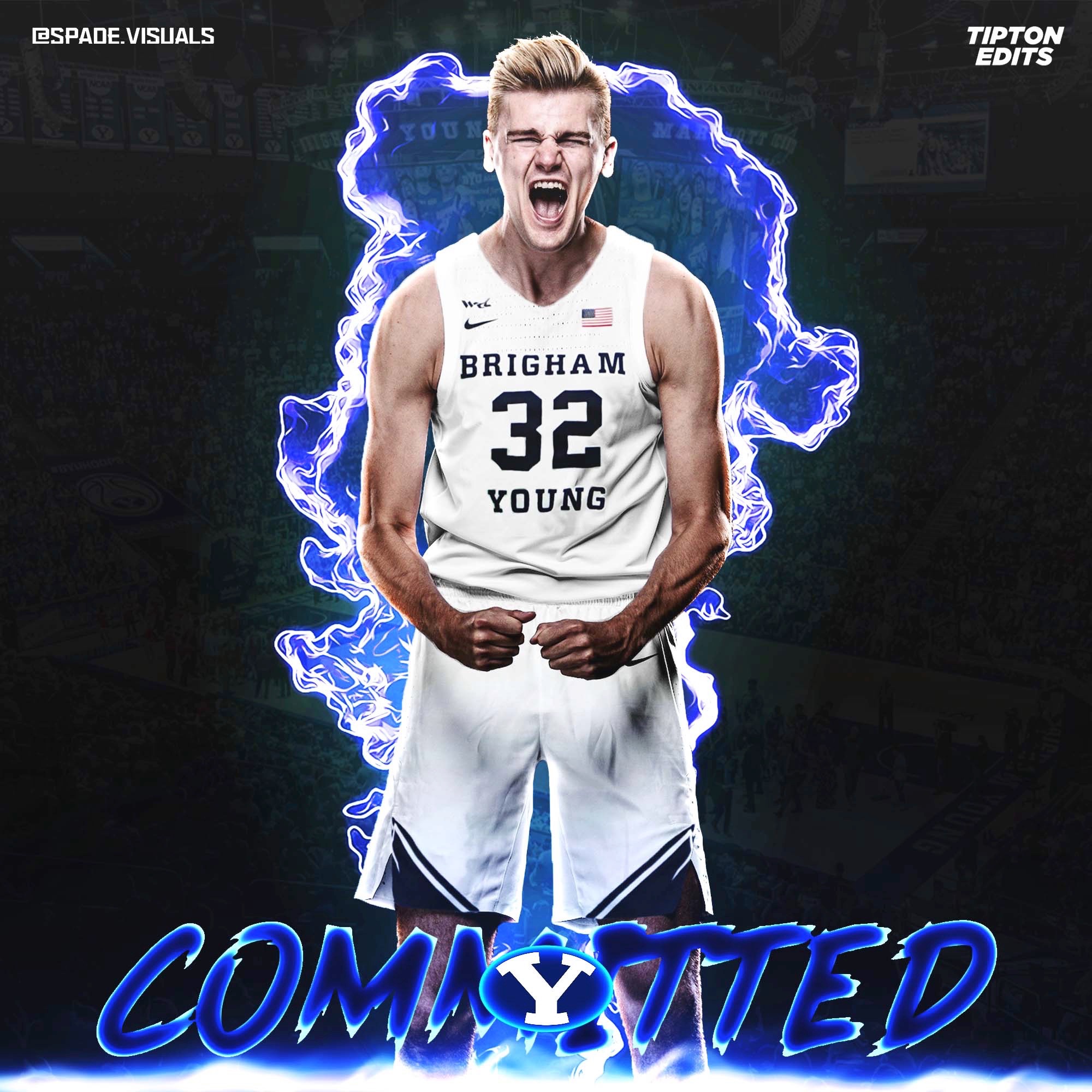
The Cougars were a real treat to watch last year. Laden with senior talent and high character guys, they were poised to make a deep run in March. BYU lost some key pieces coming into this season, namely star forward Yoeli Childs, but this loss may prove to be a net neutral after they landed the most talented transfer on the market, former Purdue center Matt Haarms. Watch out for BYU – they also have Mark Pope, whom I consider to be a top 10 coach heading into his 2nd year.
Florida State
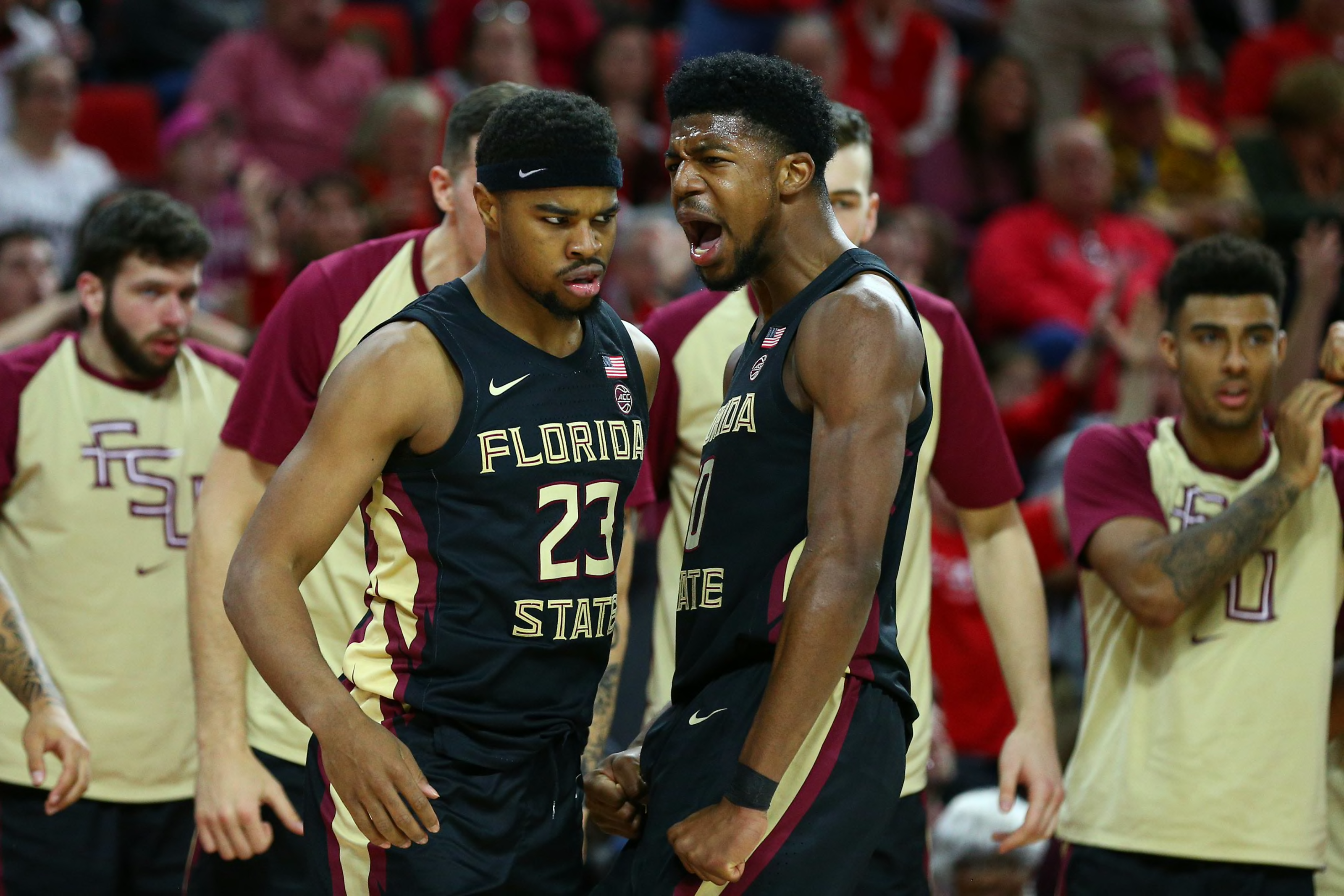
Florida State continues to impress year over year. I’m not sure what head coach Leonard Hamilton is putting in the water down in Tallahassee, but it’s consistently elevated relative unknowns to lottery picks in the draft. This year’s squad lost three such players to the NBA but something tells me Hamilton & co. will be just fine as they are in a great position to contend for another ACC title.
Cinderellas
Richmond

The Spiders head into this season as arguably the most dangerous non-power conference squad. They had four starters averaging 13 points or more last season and return just about everyone. Winners of 24 games last year (including a 14-4 conference record), their best basketball appears to still be ahead of them. Look for dynamic guard Jacob Gilyard to emerge as a rising star.
St Louis
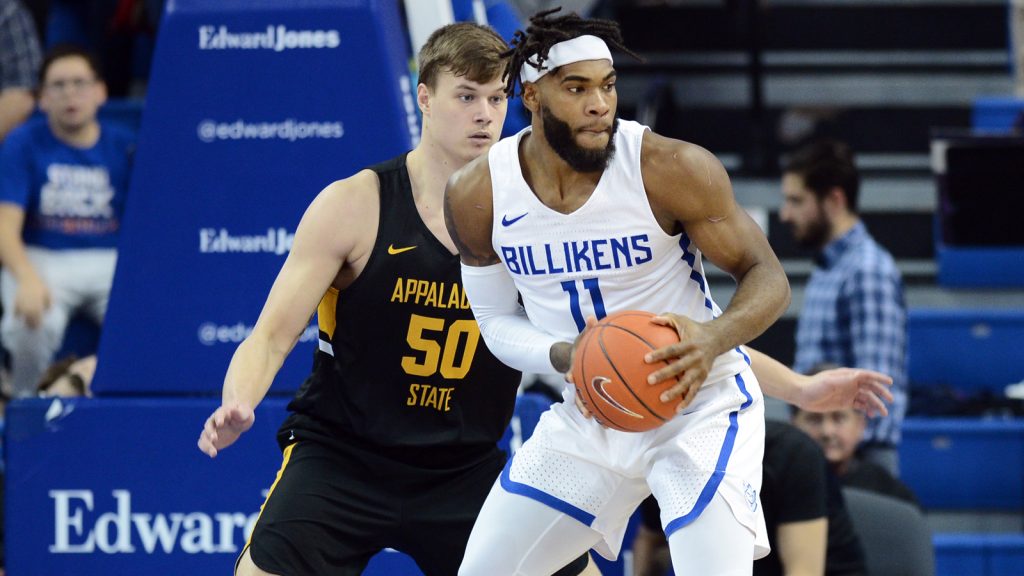
The Bilikens will give Richmond a run for their money in the A-10. They also return everybody and feature a dominant frontcourt player in Hasahn French. These guys play tough, hard-nosed basketball and will hold a lot of teams to under 60 points this season.
Furman
/cdn.vox-cdn.com/uploads/chorus_image/image/57277027/Daniel_Fowler.0.jpg)
I love this team. The Paladins are my pick to shock the world this March. It’s been a few years in the making, as Furman has consistently battled at the top of the vastly under-rated SoCon conference, and this finally feels like their time. They narrowly lost in OT to Auburn last year when Auburn was undefeated at the time, and they’ll have plenty of chances to boost their resume against the likes of Richmond, Cincinnati, and Alabama before they head into conference play. This is the best team in the country at drawing charges.
Northern Iowa
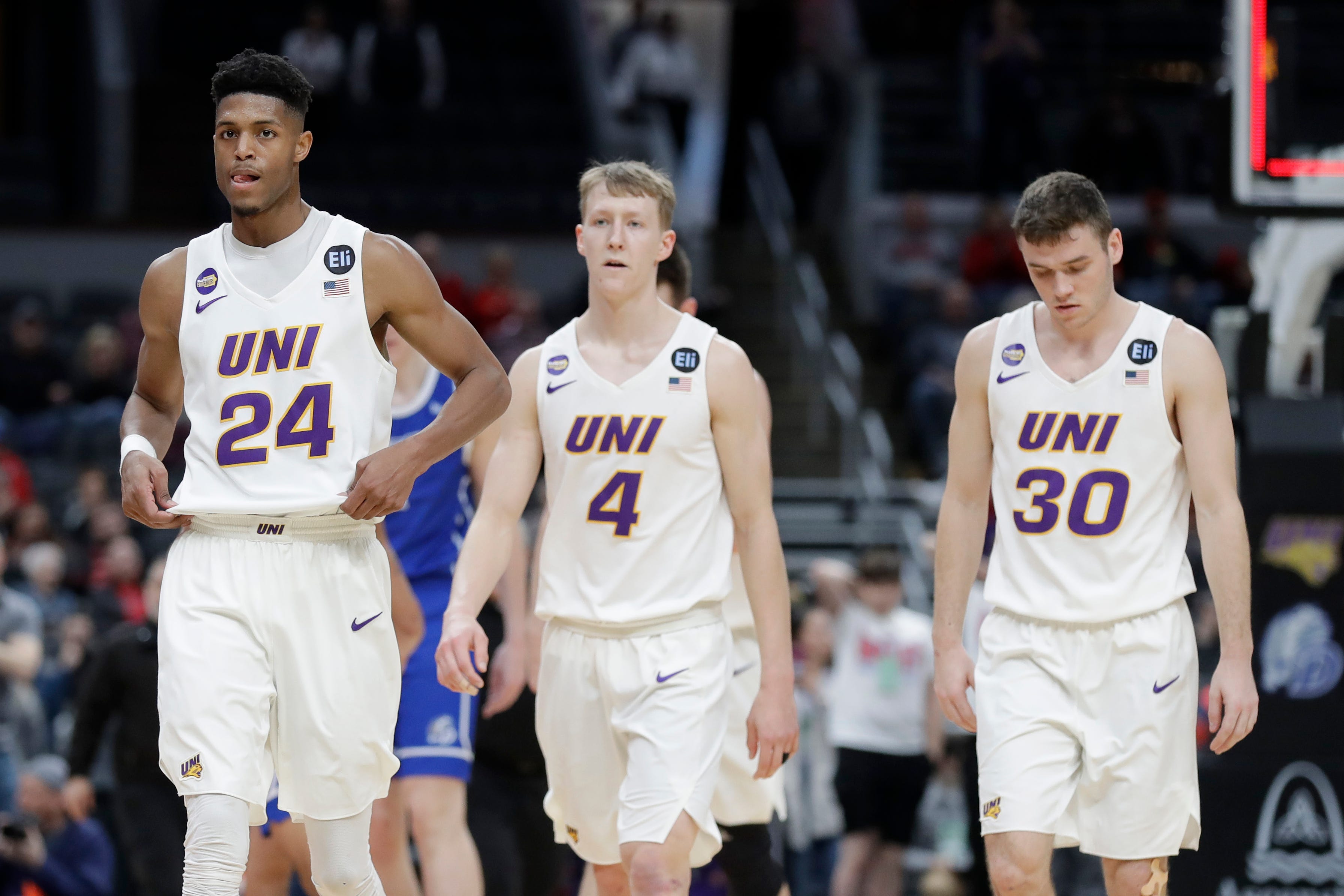
AJ Green is the real deal. As an over-sized guard he can see over most defenders and his high release makes him even harder to guard. Green averaged 20 points per game last season and has a good chance of besting that his senior year. When the game is tight, you want the ball in his hands as he has a knack for elevating his play when it matters most. What makes Northern Iowa such a threat extends far beyond Green, however. He has a tremendous post player at his disposal and is surrounded by snipers. Expect Northern Iowa to run up the score in most games.
UNC Greensboro

UNCG is another top team from the SoCon worth keeping an eye on this season. They’re tough, handsy, physical, and athletic – they will overwhelm most of their opponents with a relentless zone press. Isaiah Miller is a name to follow for the Spartans. He averaged 18 points, 5 rebounds, 3 assists, and 3 steals per game last season.